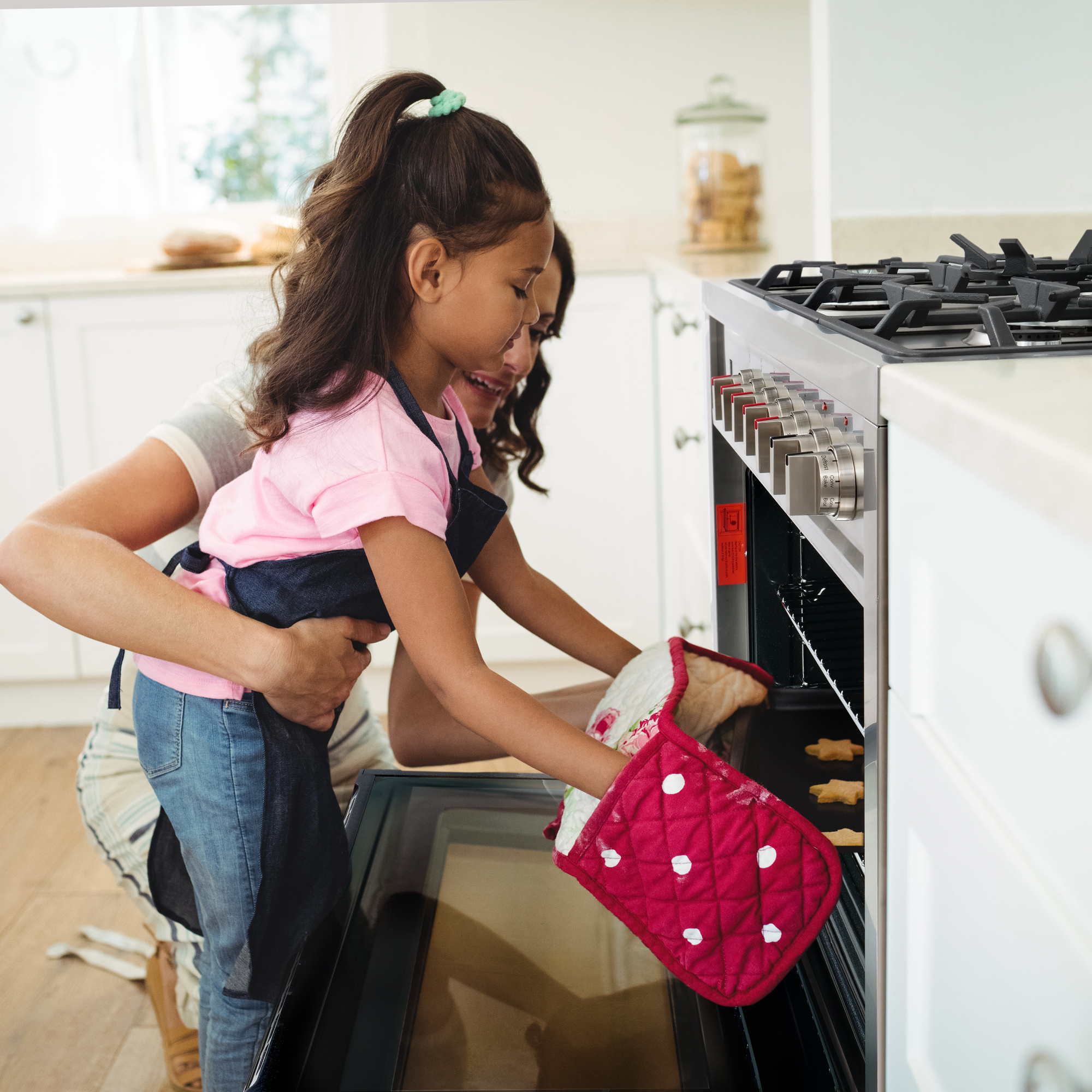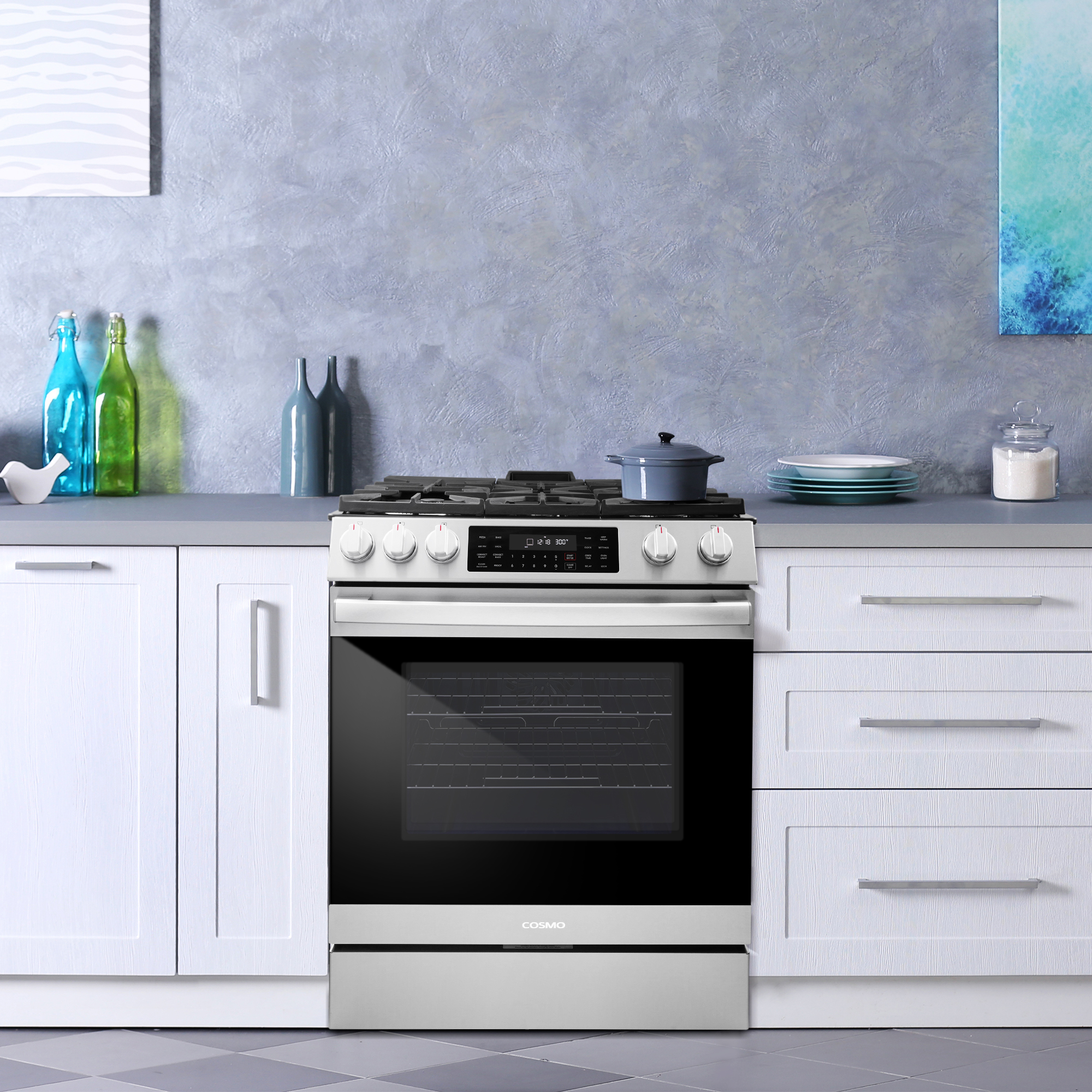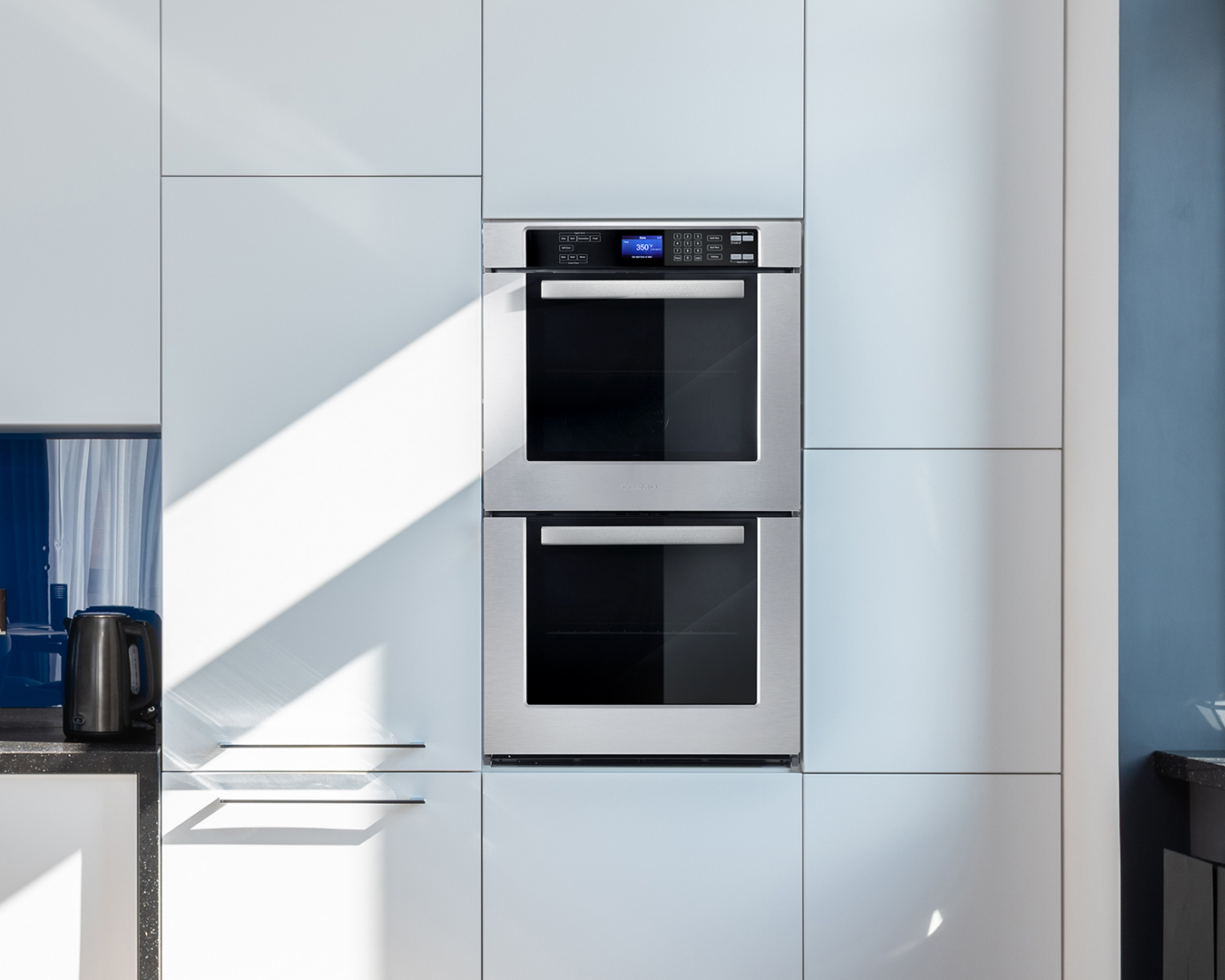The COS-305AGC Gas Range: 30-Inch Performance with 5.0 Cubic Foot Convection Oven
The 30-inch gas range remains the most popular residential cooking appliance size, fitting standard kitchen layouts while providing adequate cooking capacity for most households. The COS-305AGC delivers on this standard format with five sealed gas burners, a generous 5.0 cubic foot convection oven, and practical features like a wok grate attachment and lower storage drawer. Part of Cosmo’s AG Series, this range combines gas cooktop precision with convection oven performance, full metal knobs, and LP convertibility in a brushed stainless steel package designed for serious home cooking without excessive complexity. The appeal of 30-inch gas ranges lies in their balance of cooking capacity, kitchen fit, and fuel versatility. Gas burners provide immediate heat response and visible flame control that many cooks prefer, while the substantial oven capacity handles everything from weeknight dinners to holiday meals. The convection fan ensures even heating for better baking results, and the sealed burner design simplifies cleanup compared to older open burner configurations. For households wanting capable, straightforward cooking equipment without stepping up to larger or more complex ranges, the 30-inch gas range format delivers proven performance. Five Sealed Gas Burners for Cooking Versatility The five-burner configuration on the COS-305AGC provides cooking flexibility through varied heat outputs and multiple simultaneous cooking zones. Sealed burner design contains spills and prevents food from falling into burner mechanisms, making cleanup dramatically easier than open burner designs. Spills stay on the cooktop surface where they wipe away rather than burning onto burner components. Multiple burners operating simultaneously support complex meal preparation. You can boil pasta, sauté vegetables, simmer sauce, keep items warm, and prepare a main dish all at once without waiting for burners to free up. Varied BTU outputs across the five burners (though specific outputs aren’t detailed, typical configurations include high-output, standard, and low simmer burners) accommodate different cooking tasks. High-heat searing, steady sautéing, and gentle simmering all require different heat levels that multi-output configurations provide. The front control knob layout makes all burner controls accessible without reaching over hot cooking surfaces. This safety and convenience feature prevents burns and makes operation more comfortable during active cooking. Heavy-duty cast iron grates provide stable, heat-resistant surfaces for cookware while distributing heat from burners. Quality grates withstand high temperatures and heavy pots without warping or degrading. Continuous grate design (typical in five-burner configurations) allows sliding heavy pots between burners without lifting, reducing the risk of spills and making cooking safer and more convenient. 5.0 Cubic Foot Convection Oven Capacity The generous 5.0 cu. ft. oven capacity paired with convection technology creates baking and roasting capabilities that exceed what standard ovens provide. Large capacity accommodates substantial cooking projects – full-size roasting pans, multiple sheet pans, large casseroles, or holiday turkeys all fit comfortably. This volume eliminates the frustration of trying to squeeze oversized items into inadequate oven space. Convection fan circulation moves heated air throughout the oven cavity, eliminating hot and cold spots that cause uneven baking in conventional ovens. The fan ensures consistent temperatures across all rack positions. Faster, more even cooking results from convection airflow that transfers heat more efficiently than still air. Many foods cook 25% faster in convection ovens while achieving better browning and more consistent results. Multiple rack positions with substantial vertical space allow cooking several dishes simultaneously at different heights. The convection fan ensures all racks receive similar heat despite their positions. The oven capacity serves family cooking effectively without stepping up to the 36-inch or larger range sizes that many kitchens can’t accommodate. You get serious cooking volume in standard appliance dimensions. Four oven functions provide cooking versatility for baking, broiling, and roasting tasks. The various heating modes address different cooking needs without overwhelming users with excessive options. Wok Grate Attachment for High-Heat Cooking The included wok grate attachment specifically supports high-heat wok cooking techniques that flat grates can’t accommodate properly. Wok stability improves dramatically with the proper grate that cradles the wok’s rounded bottom. Standard flat grates allow woks to wobble or tip, creating safety hazards and cooking difficulties. Concentrated heat from positioning the wok closer to the flame creates the intense heat that authentic stir-frying requires. Flat grates position woks too far from heat sources, preventing proper wok cooking temperatures. The specialized cooking techniques that woks enable – tossing ingredients, developing wok hei (breath of the wok), and controlling heat through wok positioning – all depend on stable wok placement that only dedicated grate attachments provide. Versatility beyond wok cooking includes supporting other round-bottom cookware that standard grates don’t accommodate well. Certain traditional cooking vessels benefit from the grate design. The inclusion of the wok grate shows attention to diverse cooking styles beyond typical American cooking methods. This feature appeals to households that regularly prepare Asian cuisines requiring high-heat wok cooking. Easy switching between standard and wok configurations means you’re not locked into one cooking style. Remove the wok grate when using standard cookware, install it when wok cooking. Lower Storage Drawer for Kitchen Organization The storage drawer below the oven provides valuable space for cooking equipment, eliminating clutter while keeping items conveniently accessible. Cookware storage keeps pots, pans, and baking sheets readily available near where you use them. The drawer accommodates bulky items that consume excessive cabinet space. The convenient location directly below the cooking surface means frequently used items stay close at hand without requiring trips across the kitchen to retrieve cookware from distant cabinets. Heat-tolerant storage design withstands warmth from the oven above without affecting stored items. The drawer isn’t intended for heat-sensitive materials but works fine for metal cookware and bakeware. Kitchen organization improves when you can consolidate cooking equipment in one location rather than dispersing it across multiple cabinets. The drawer helps maintain order in compact kitchens. The storage eliminates wasted space below the range that many older designs leave empty or difficult to access. Modern ranges maximize utility by providing usable storage in this location. Easy-glide drawer mechanisms allow smooth opening even when loaded with heavy cookware. Quality drawer construction ensures reliable operation through








